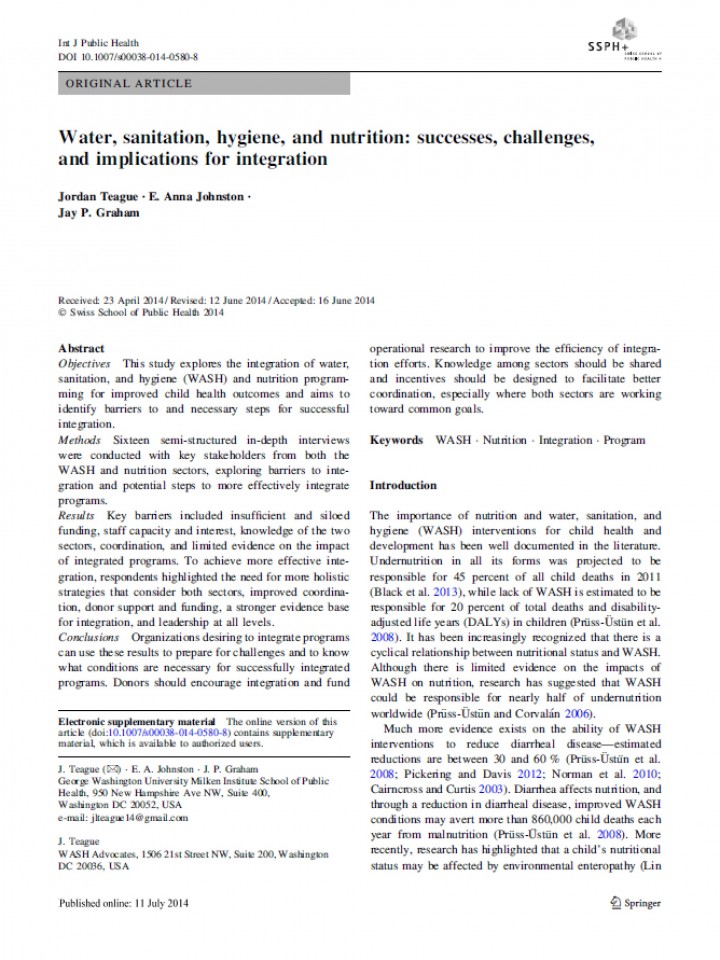Water, sanitation, hygiene, and nutrition: successes, challenges, and implications for integration
Teague, J., Johnston, E. A., Graham, J. P. (2014)

Published in: 2014
Pages: 9
Publisher:
International Journal of Public Health December 2014, Volume 59, Issue 6, pp 913-921
Author:
Teague, J., Johnston, E. A., Graham, J. P.
Uploaded by:
SuSanA Admin
Partner profile:
common upload
3828 Views
11 Downloads
Objectives: This study explores the integration of water, sanitation, and hygiene (WASH) and nutrition programming for improved child health outcomes and aims to identify barriers to and necessary steps for successful integration.
Methods: Sixteen semi-structured in-depth interviews were conducted with key stakeholders from both the WASH and nutrition sectors, exploring barriers to integration and potential steps to more effectively integrate programs.
Results Key barriers included insufficient and siloed funding, staff capacity and interest, knowledge of the two sectors, coordination, and limited evidence on the impact of integrated programs. To achieve more effective integration, respondents highlighted the need for more holistic strategies that consider both sectors, improved coordination, donor support and funding, a stronger evidence base for integration, and leadership at all levels.
Conclusions: Organizations desiring to integrate programs can use these results to prepare for challenges and to know what conditions are necessary for successfully integrated programs. Donors should encourage integration and fund operational research to improve the efficiency of integration efforts. Knowledge among sectors should be shared and incentives should be designed to facilitate better coordination, especially where both sectors are working toward common goals.
Bibliographic information
Teague, J., Johnston, E. A., Graham, J. P. (2014). Water, sanitation, hygiene, and nutrition: successes, challenges, and implications for integration. International Journal of Public Health December 2014, Volume 59, Issue 6, pp 913-921
Filter tags
English Journalists














